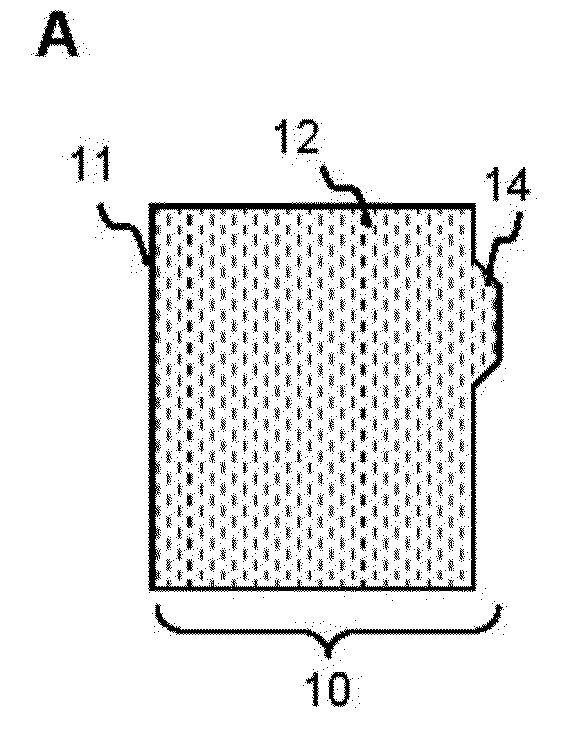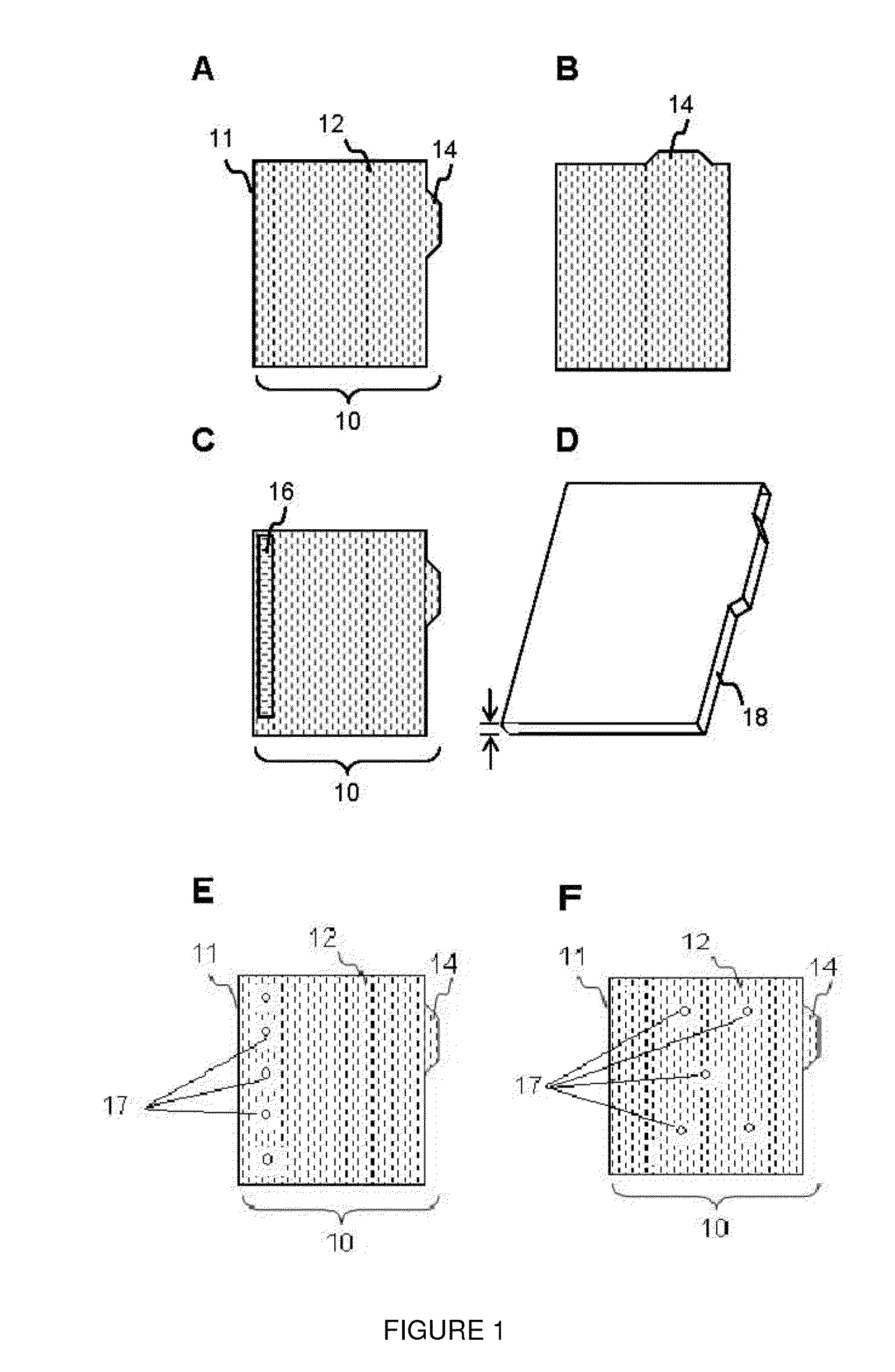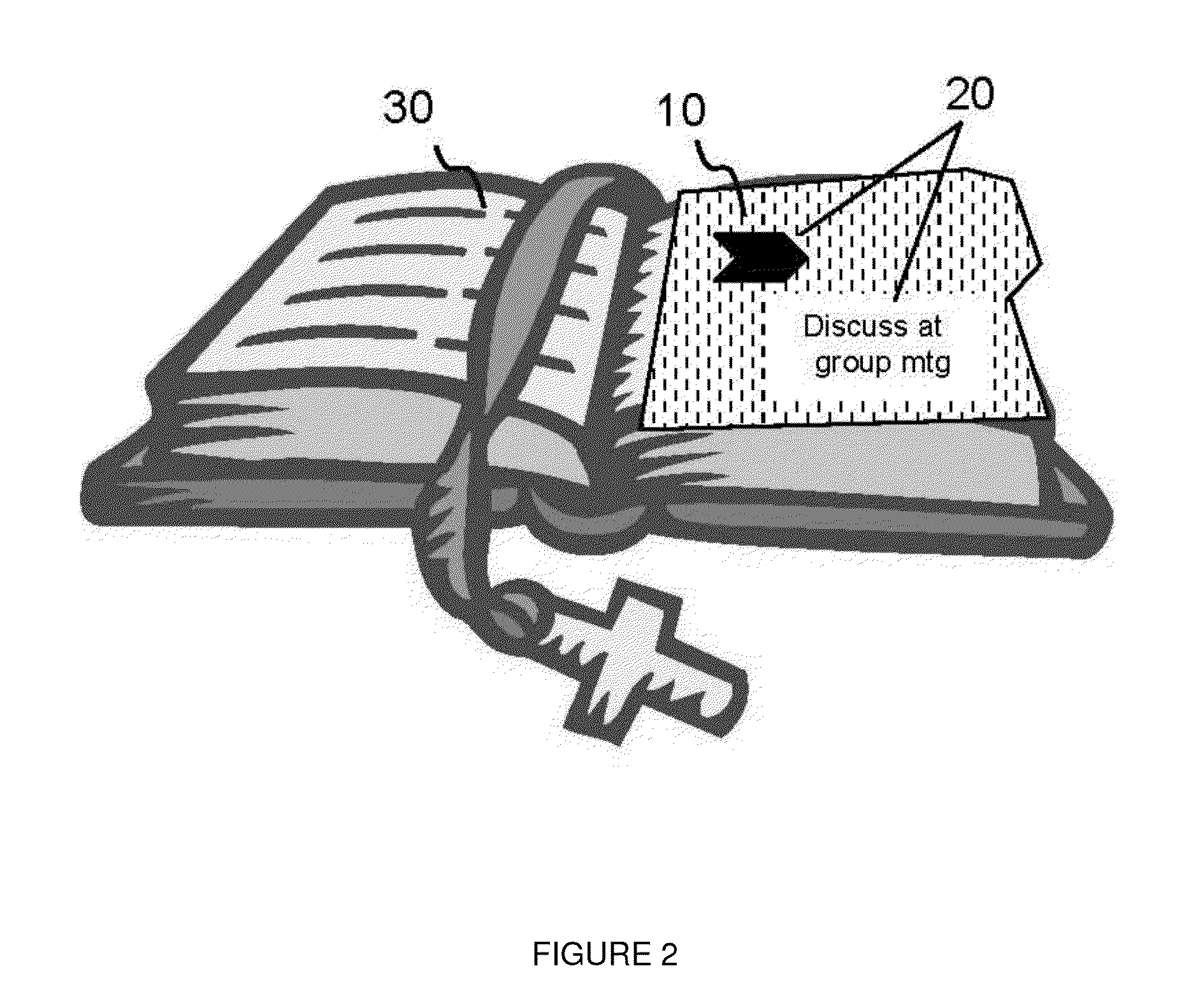Tabbed Paper for Annotation of Documents Including Book Inserts
a tabbed paper and document technology, applied in the field of thin sheets of tabbed tracing paper, can solve the problems of increasing the thickness of the document, reducing the resiliency of the tab, and reducing so as to improve the resiliency and durability of the tab, not substantially diminishing the integrity of the tab
- Summary
- Abstract
- Description
- Claims
- Application Information
AI Technical Summary
Benefits of technology
Problems solved by technology
Method used
Image
Examples
Embodiment Construction
[0023]As used herein, “annotate” and “annotating” broadly refers to writing notes (including but not limited to letters, numbers, symbols and words), drawing, underlining, highlighting, coloring, shading or otherwise marking a writable surface in relation to a printed document. Annotations can be made on the same page of a document of interest; however, it is the objective of the present invention that annotations are made on transparent or substantially transparent inserts placed over the document of interest. Materials suitable for inserts of the present invention include paper of all types, particularly tissue paper and tracing paper, vellum, and similar materials commonly used as writing surfaces that are receptive to pencil and ink marks.
[0024]By “receptive to pencil and ink marks” it is meant that it easy to mark the surface with a ballpoint pen, pencil, highlighter or other common writing utensil. Other protective covers and inserts, such as plastic transparencies, are not ea...
PUM
 Login to View More
Login to View More Abstract
Description
Claims
Application Information
 Login to View More
Login to View More - R&D
- Intellectual Property
- Life Sciences
- Materials
- Tech Scout
- Unparalleled Data Quality
- Higher Quality Content
- 60% Fewer Hallucinations
Browse by: Latest US Patents, China's latest patents, Technical Efficacy Thesaurus, Application Domain, Technology Topic, Popular Technical Reports.
© 2025 PatSnap. All rights reserved.Legal|Privacy policy|Modern Slavery Act Transparency Statement|Sitemap|About US| Contact US: help@patsnap.com



